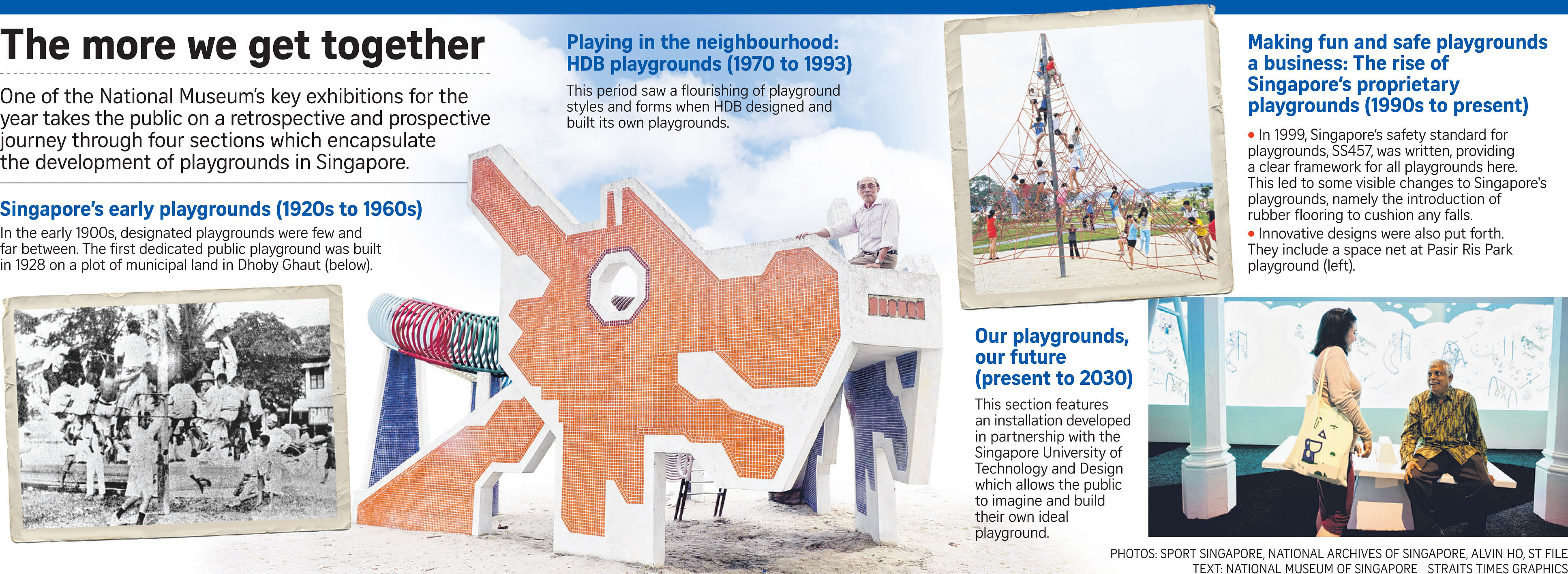Sandpits, swings, water elements, nature audioscapes - and possibly climbing courses.
All these may be part of a new playground to be set up next year outside the National Museum. The playground will be located near the Banyan tree which has played host to art installationsover the years.
The public will get to weigh in on how their ideal playground should look like at a new exhibition that was launched by Minister for National Development Lawrence Wong yesterday.
Called The More We Get Together: Singapore's Playgrounds 1930-2030, the exhibition at the Stamford Road museum is the first in-depth showcase ofplaygrounds.
Mr Wong said that it was timely to take stock of how far Singapore has progressed to make better and more inclusive playgrounds. He said: "Playgrounds are very well-loved landmarks in our HDB estates and we've certainly come a long way from the days when we had basic functional playground equipment like slides and see-saws."
Nearly two years in the making, the exhibition has four sections.
The first details how children used to turn to open fields, open drains, alleyways and five-foot ways to play. The first dedicated public playground was built in 1928 in Dhoby Ghaut. In 1930, import and export merchant David J. Elias donated swings, a see-saw and a slide to Katong Park.
Said Ms Rachel Eng, 22, a curatorial and programmes assistant manager who co-created the exhibition: "Back then, tuberculosis was rampant. The Government encouraged people to head to Katong Park for fresh air and to take a break from the overcrowded conditions."
In 1950, the Government set up a Playing Fields Committee to examine Singapore's recreational needs. Its report found that there was less than 100ha of space serving the sports and recreational needs of 700,000 people. Its recommendation included rolling out more open, recreation spaces. New play areas were constructed in the first satellite town, Queenstown.
The second section details how the HDB started designing and building its own playgrounds based on local heritage and culture.
On show are the blueprints of HDB playground designer Khor Ean Ghee. He is known for his designs of the Dragon and Dove playgrounds, among others. Over 13 years, the trained architect who also has a degree in fine arts said he developed 40 designs.
Mr Khor, 83, said before HDB started rolling out these designs, there were few playgrounds here. "Then, few countries thought of children's interests. You might come across monkey bars and fitness equipment but these were mostly located within school grounds."
His designs, which incorporated sandpits and varying textures, were inspired by his childhood experiences. "We had to use our own imagination - we made our own kites, used a bamboo stick to thump and run after a tyre, and we pretended palm tree leaves were boats. We created our own playgrounds," he said.
The third section details how a new safety standard for playgrounds provided a clear framework for all playgrounds here.
The final section discusses the role of playgrounds in shaping a sense of identity.
The exhibition runs till Sept 30.


